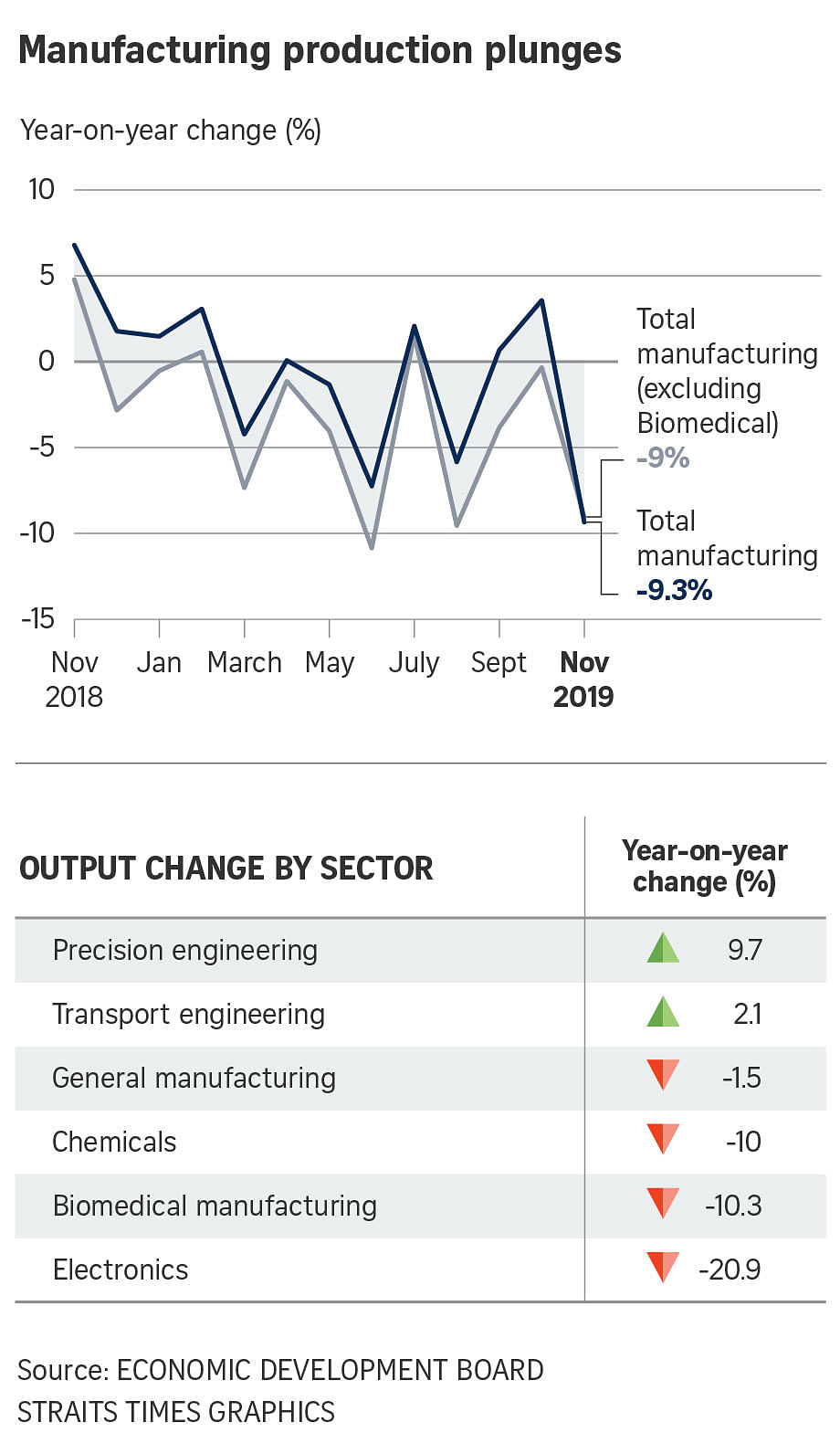The nascent recovery of Singapore's manufacturing sector has suffered a setback after two consecutive months of growth.
Overall factory output slumped 9.3 per cent last month from a year ago, down from a revised 3.6 per cent increase in October, according to figures released by the Economic Development Board (EDB) yesterday.
The figure was far worse than the 0.8 per cent decline forecast by analysts polled by Bloomberg and the worst showing since December 2015.
DBS senior economist Irvin Seah said November's figures show that there are still risks on the horizon despite positive signs in the global economic climate.
"We will continue to see a mixed picture moving forward. The figures will remain rather choppy, and the earliest we'll see more consistent numbers will be the second quarter of next year," he said.
Manufacturing production was dragged down by weakness in the electronics and biomedical clusters, which account for nearly half the sector's output between them.
Electronics output fell 20.9 per cent last month, compared with a year ago. Cumulatively, the cluster has shrunk 7.8 per cent over the first 11 months of the year, said EDB.
The main drag on the sector came from computer peripherals, which plunged 31.8 per cent from the same period last year, and semiconductors, which slid 25.7 per cent.
Said OCBC Bank head of treasury research and strategy Selena Ling: "Notwithstanding 'phase one' of the US-China trade agreement, the road ahead for the manufacturing and electronics recovery may remain bumpy."
Barclays economist Brian Tan said: "While there are signs that electronics production may be bottoming, the gap (between production and exports) remains sizeable."
Biomedical manufacturing tumbled 10.3 per cent, compared with the same period last year.
This was due to a dip in pharmaceuticals output on account of a different mix of active pharmaceutical ingredients and biological products produced. Meanwhile, lower export demand hit the medical technology segment.
Ms Ling noted that it was the first year-on-year contraction in the biomedical cluster since September last year, adding that the decline in pharmaceutical output "is illustrative of the volatility inherent in the biomedical cluster".
There were bright spots among the other manufacturing clusters.
Precision engineering output grew 9.7 per cent last month, lifted by both the machinery and systems, as well as the precision modules and components, segments.
Ms Ling said November's manufacturing figures were a "negative surprise to the recent green shoots theme developing in the global and regional economic landscape", and noted that the full-year economic growth for this year could come in at around 0.5 per cent, or the lower end of the official forecasts.
The service sector and, to a lesser extent, the construction industry are likely to be the key drivers of economic growth for Singapore next year, she added.
United Overseas Bank senior economist Alvin Liew said the completion of "phase one" of the United States-China trade deal, which is expected to be signed early next month, may help to provide some stability to the global trade outlook.
"The expected improvement in the global economic backdrop for next year could give Singapore's manufacturing and export (sectors) the necessary boost for 2020," he said.



